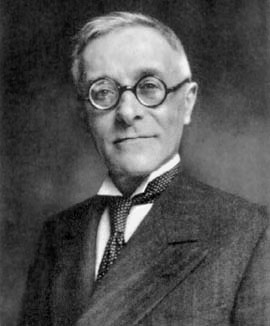Tullio Levi-Civita (nonfiction): Difference between revisions
Jump to navigation
Jump to search
(Created page with "Tullio Levi-Civita, FRS (29 March 1873 – 29 December 1941; Italian pronunciation: [ˈtullio ˈlɛːvi ˈtʃiːvita]) was an Italian mathematician, most famous for his work o...") |
No edit summary |
||
| Line 1: | Line 1: | ||
Tullio Levi-Civita, FRS (29 March 1873 – 29 December 1941; Italian pronunciation: [ˈtullio ˈlɛːvi ˈtʃiːvita]) was an Italian mathematician, most famous for his work on absolute differential calculus (tensor calculus) and its applications to the theory of relativity, but who also made significant contributions in other areas. He was a pupil of Gregorio Ricci-Curbastro, the inventor of tensor calculus. His work included foundational papers in both pure and applied mathematics, celestial mechanics (notably on the three-body problem), analytic mechanics (the Levi-Civita separability conditions in the Hamilton–Jacobi equation) and hydrodynamics. | [[File:Tullio Levi-civita.jpg|thumb|Tullio Levi-Civita.]]'''Tullio Levi-Civita''', FRS (29 March 1873 – 29 December 1941; Italian pronunciation: [ˈtullio ˈlɛːvi ˈtʃiːvita]) was an Italian mathematician, most famous for his work on absolute differential calculus (tensor calculus) and its applications to the theory of relativity, but who also made significant contributions in other areas. He was a pupil of Gregorio Ricci-Curbastro, the inventor of tensor calculus. His work included foundational papers in both pure and applied mathematics, celestial mechanics (notably on the three-body problem), analytic mechanics (the Levi-Civita separability conditions in the Hamilton–Jacobi equation) and hydrodynamics. | ||
Revision as of 19:11, 28 March 2018
Tullio Levi-Civita, FRS (29 March 1873 – 29 December 1941; Italian pronunciation: [ˈtullio ˈlɛːvi ˈtʃiːvita]) was an Italian mathematician, most famous for his work on absolute differential calculus (tensor calculus) and its applications to the theory of relativity, but who also made significant contributions in other areas. He was a pupil of Gregorio Ricci-Curbastro, the inventor of tensor calculus. His work included foundational papers in both pure and applied mathematics, celestial mechanics (notably on the three-body problem), analytic mechanics (the Levi-Civita separability conditions in the Hamilton–Jacobi equation) and hydrodynamics.
